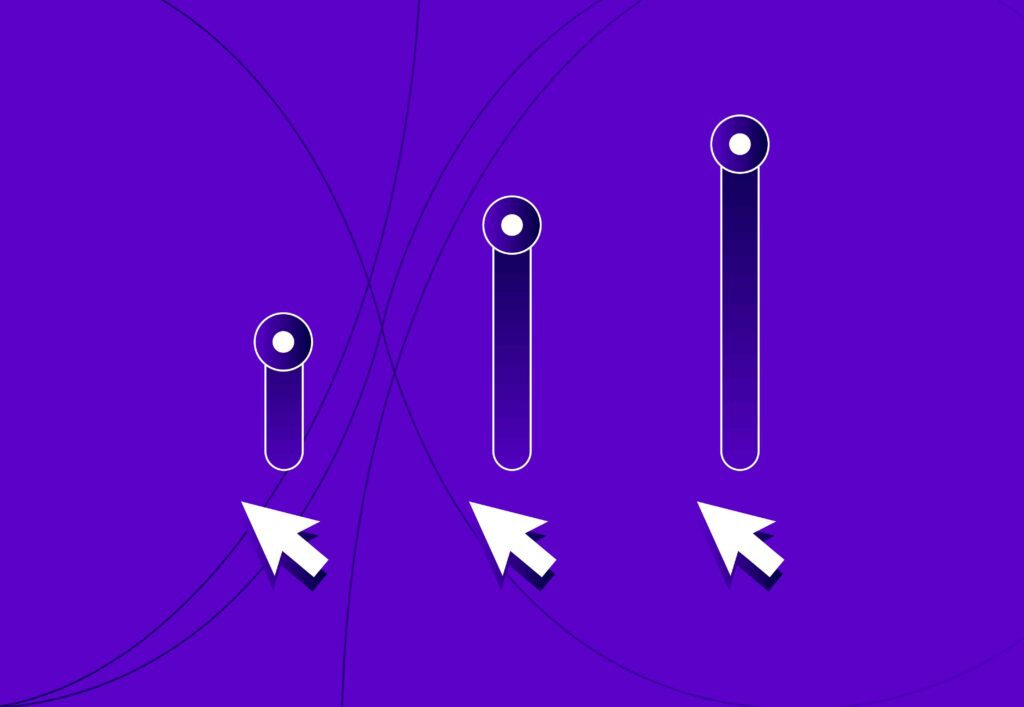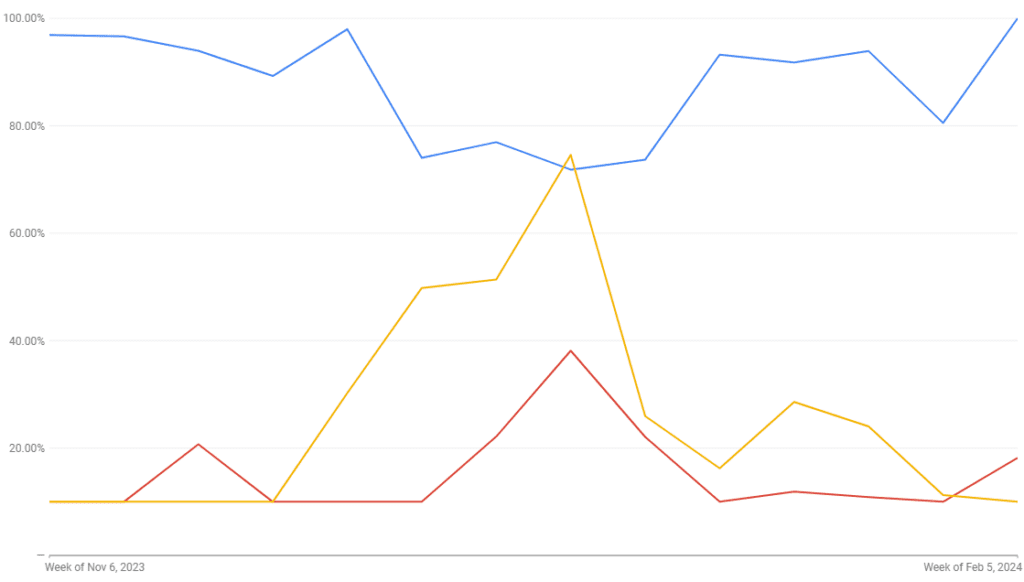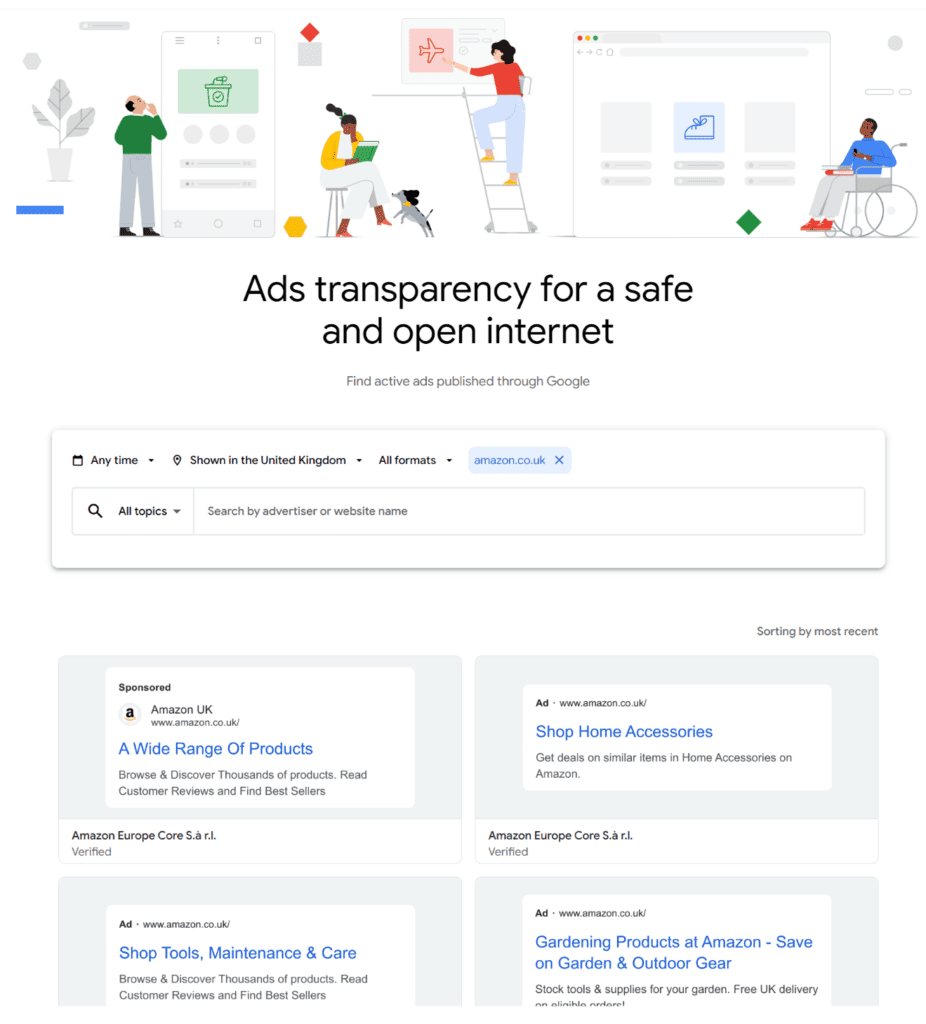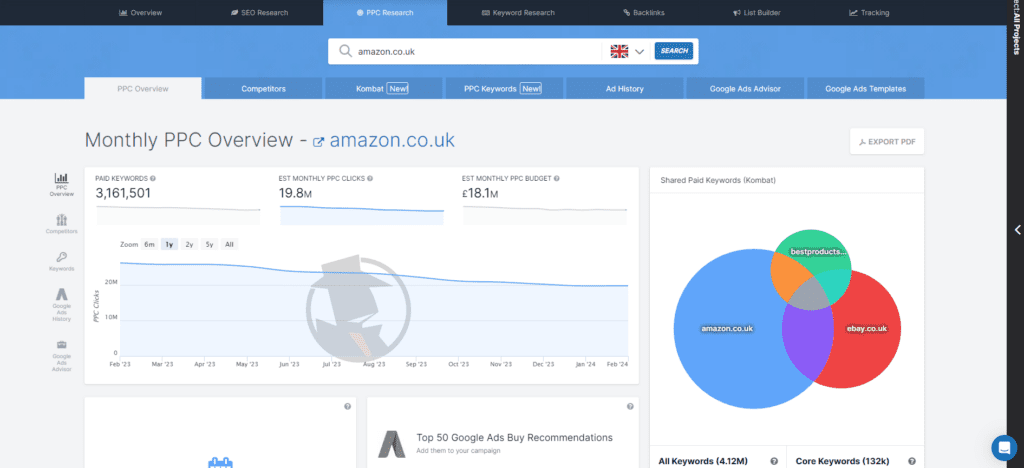
How to do a PPC competitor analysis in 8 Steps

Understanding how to properly approach and carry out an in-depth PPC competitor analysis is one of the most effective processes you can have in your skillset, no matter what your budget is.
Some might be satisfied with a quick “manual Google” of your keywords to see what your competitor’s ads say, and if your ads show at all, but this is a flawed practice (after reading this guide, you’ll quickly understand why) and you can find far greater insights from a wealth of free tools you already have access to.
Whether you’re currently running Google Ads or Microsoft Ads, or if you’re doing market research in preparation for go-live, this guide will help arm you with the tools you need to stand out and grow your PPC market share against competitors.
And if you need PPC specialists on hand, talk to us today.
What Is a PPC Competitor Analysis and Why Are They Important?
If you’re reading this guide, chances are you’re unable to lean on a dedicated PPC Consultant team, and you’re either looking to go live with PPC soon, or you’re already live with your campaigns and seeing a bit of a downturn in performance, potentially due to a competitor.
If you’re preparing to go live soon, a thorough PPC competitor analysis will arm your launch with a strong set of ad assets, researched keywords and most importantly, an understanding of what to do once you’re live with your campaigns! The rest of this guide will assume that you’re already live, but rest assured that most of the steps and recommendations will be helpful for pre-live PPC competitor analysis too.
However, if you’re already live and you work with Google Ads regularly, like us, it’s all too easy to hyper fixate on the in-account performance and obsess over those red and blue lines in your timeline chart.
You might see that an “old faithful” bread-and-butter keyword that normally performs excellently has suddenly stopped converting, or now generates conversions at a much greater cost… and you might spend hours auditing your changes or sense-checking your targeting to understand why.
It’s worth bearing in mind that the changes you make in Google Ads aren’t “the be-all-and-end-all” for what drives performance. By leveraging Google Ads, you are simply entering a market – one that shifts, rises and falls, and (vitally) has other advertisers catering to that market.
Sometimes, what drives negative performance isn’t an action taken in-account, but rather inaction in response to a competitor.
Rely on this guide to show how a planned and in-depth approach to PPC competitor analysis can bring performance back to your “old faithful” campaigns, and maybe even come out stronger than you did when you began!
Competitor Analysis Tools to Know About
- Tool 1: FREE – Google Ads Transparency
- Tool 2: PAID (but with FREE trials available) – Spyfu or SEMRush
- Tool 3: (Mostly) FREE – Scripts
How to Conduct an Analysis Effectively
The rest of this guide presumes you’re reacting to a competitor making a push in the market, but you can absolutely be proactive and run through these steps even if you’re not seeing an issue.
Step 1: Use Your Account Data to Understand Where Your Priorities Should Be
If you’re already live with PPC campaigns, odds are you already have an understanding of what keywords, asset groups, creatives etc drive the most performance, and this is where your priorities should sit.
Top-converting keywords, best-performing messaging, highest CTR ad assets – all of these are “load bearing” pillars in your account, and as such, performance would be negatively impacted if they were to weaken.
Identify your most vital account factors and use these as your focus for PPC competitor analysis. Don’t waste time on factors that aren’t going to be impactful (at least not as a first priority).
Step 2: Diagnose In-Account Issues That May Be Driven by Competitors
This is where you can utilise Google Ads’ existing toolset, without leaving the platform at all! Competitor Metrics in Google Ads provide all sorts of useful data that can properly inform your decision-making once your PPC competitor analysis is concluded.
“Impression Share” – this shows you what percentage of all targeted searches you showed for.
“Abs Top IS” – this stands for “Absolute Top Impression Share” and replaced the “Average Position” metric in the late 2010s. Instead of showing you your average ad ranking position, you can now see the bit you care about most – how often did your ads appear at the #1 position? Within your Impression Share, Abs Top IS shows you what percentage of those impressions showed at #1.
“Click Share” is most useful for e-commerce retail accounts on Google Shopping, as it includes your eligible product-level share of clicks against competitors, but it can still be useful for lead-gen-focused accounts.
If you see a drop in any of these rankings, and you can’t attribute them to a lack of budget or other change in-account, it’s possible that getting a view on your Auction Insights against competitors may reveal some actionable insights.
Step 3: Use Auction Insights and Report Tools to Shortlist Competitors and Gain More Data
“Auction Insights” in the Campaign review is useful for quickly identifying your competitors and their own competitive metrics (relative to yours) at a glance, but we prefer using the Reports tool in Google Ads to get a visualisation and timeline of changes in the SERP landscape.
Below you can see an example of a visualisation in the Report tool (which we’ve filtered to only include a Brand campaign). Notice how the chart shows a timeline of when competitors tried bidding on our client’s brand name (blue line), resulting in Abs Top IS dropping? By monitoring this report we’re able to quickly identify these efforts, ID the competitors we need to focus on and make a plan of action, resulting in us beginning to regain ground against an aggressive pair of competitors.
Here we had the advantage of 10/10 Quality Scores, so by giving a little extra focus to our Brand campaign, we were able to claw back top ranking and do so at a cheaper CPC than our competitors, driving their level of bidding down due to cost-of-competition.

Step 4: Lean on Scripts for Planning and Future Measurement
Now that you’ve identified the targets of your PPC competitor analysis, it’s time to set the foundations for your actions and prepare your account to give you early warnings.
In particular, we’d recommend:
Quality Score Historical Tracker – this will help you measure and attribute uplifts in Quality Score, a vital metric for gaining Impression Share/Abs Top IS against competitors.
Impression Share Alert – this acts as an “early warning” system and automatically sends you an email if your campaigns drop below a certain threshold. This one is particularly useful to have running constantly, even if you’re dominating SERPs. A competitor can always make changes that can sweep the rug from under you, so always be alert(ed)!
Competitor Change Alert – similarly, this script alerts you when new competitors emerge and when they increase their visibility/coverage against your targeting set. Vital one, this.
Step 5: Set Benchmarks for Your Areas of Focus
To properly measure the actions following your PPC competitor analysis, you’ll need to determine your starting position. Log your current CTR, Competitive Metrics, CPC, cost-per-conversion etc… because if you’re successful, you’ll see these shift, and there’s nothing a PPCer (or a client) loves more than being able to attribute success.
Step 6: Use the Google Ads Transparency Tool to stack up your ads vs theirs and find opportunities
Have you ever made a manual Google search to try and make your competitor’s ads show? We don’t recommend this for numerous reasons, but primarily because following Google’s update in 2022, you can now see all of them whenever you want, anonymously, for free!
Google Ads Transparency Center lets you enter any domain, country and ad format and shows you all live ads from those filters.

No more mystery, no more manually searching for ads on Google!
Now you can see the kind of USPs they’re offering (as well as other copy factors) to try and compare to your own ads – are they more emotive or informative? Price or review-focused? Are they running Display as well as Search?
Congratulations, you’re armed with ad and copy opportunities!
Step 7: Use Tools like Spyfu or SEMRush
They offer free trials, but the paid versions of tools like SpyFu or SEMRush are extremely useful for conducting a PPC competitor analysis.
They feature tools for looking at ads, but they’re most useful for getting a view of competitor keywords and a ballpark idea of how much budget they put toward them.

The value in targeting competitor-focused keywords while simultaneously armed with an up-to-date view of benchmarked metrics and laser-focused ad copy cannot be overstated. But don’t overlook the importance of enhancing your existing keyword suite – adding effective variants on your existing keywords can be an effective “quick win” in increasing your Quality Score & clawing back Share.
Step 8: Test, Assess and Report
With your PPC competitor analysis plan of attack made (new keywords identified, new ad copy to test), you’re free to sensically roll out your informed experiments and measure the impacts over time.
You might see your CTR and Conversion Rate increase as an early sign of success, with an increase in Quality Score and your competitors decreasing their visibility as long-term signs of success.
The earlier steps of setting benchmarks are vital for this reason alone – you want your newfound success to be attributable to the actions you took to get there.
And it forms a basis for the next time you undertake a PPC competitor analysis (see our FAQs for more on this).
Not Sure Where You Stand? Turn to Our PPC Experts
There’s no doubt that a PPC competitor analysis like this can be made easier by hiring a dedicated PPC Team. We are more than happy to share how your own PPC campaigns might benefit from an in-depth review and action plan, and see it through to help dominate your market.
Interested? Get in touch today.
FAQs
How long does a PPC competitor analysis take?
An in-depth one like the one we’ve outlined can take a whole day, including the setup of scripts. You can achieve a powerful analysis with a half-day’s dedication.
How often should I run a PPC competitor analysis?
Typically, a PPC competitor analysis can be carried out anywhere from weekly to monthly, depending on the scale of data you’re working with and the depth of your analysis. The more data/budget, the more often you should be running an analysis, but things like ad reviews can be carried out less often, as ad copy is less likely to change week-to-week.
Can I run a PPC competitor analysis for free?
Yes, the free tools outlined in this guide absolutely can give you what you need to run an analysis – but to get the most out of the process, you’ll benefit from the addition of paid tools such as Spyfu or SEMRush.


